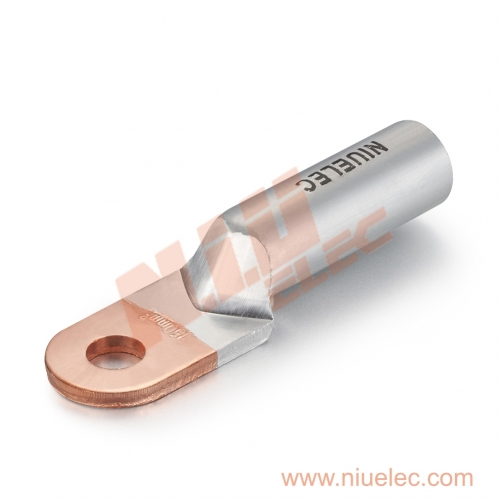Maximizing System Efficiency with the Right Cable Lugs What Electrical Contractors Need to Know
Table of contents:
Why Aluminum to Copper Terminations Require Specialized Lugs
How to Choose Between Cable Lugs Types for Large Scale Projects
Where to Find High Quality Cable Lug Manufacturers for Industrial Use
Why Aluminum to Copper Terminations Require Specialized Lugs
When connecting aluminum cables to copper conductors, electrical contractors face a challenge due to the physical and chemical properties of these two metals. Direct contact between aluminum and copper can lead to galvanic corrosion, which compromises the connection quality and increases system resistance, ultimately leading to overheating and potential failures. Bimetallic lugs are specifically designed to address this problem. These lugs, such as the DTL-1 Cable Bimetallic Lug found on niuelec.com, combine aluminum and copper with friction welding to create a stable, corrosion-resistant connection. They ensure efficient current transmission and durability, making them indispensable for aluminum-to-copper terminations in any industrial or commercial application.

How to Choose Between Cable Lugs Types for Large Scale Projects
Understanding the variety of cable lugs types available is key to selecting the right ones for large-scale projects. Standard options include copper lugs, aluminum lugs, and brass lugs, each suited for specific materials and uses. For mixed-metal connections, bimetallic lugs are often the most effective choice. Factors contractors must consider include the current carrying capacity, environmental conditions, and the mechanical strength required. For example, high-vibration environments may necessitate lugs with enhanced durability and secure fastening mechanisms. Additionally, pre-filled jointing compounds in certain lugs, like many bimetallic options, enhance conductivity and connection stability. By aligning lug choices with project specifications, contractors can ensure optimum performance, cost efficiency, and compliance with technical standards. With over 50 types of lugs available, staying informed about the latest advancements can make a significant difference in project outcomes.
Where to Find High Quality Cable Lug Manufacturers for Industrial Use
Choosing a trusted supplier is crucial when sourcing cable lugs for industrial applications. High-quality manufacturers, such as N.I.U Electric Group, offer an extensive range of products designed to meet the unique challenges of modern electrical installations. The DTL-1 Cable Bimetallic Lug from their lineup is an excellent example of a premium product valued for its exceptional aluminum and copper purity (99.5% and 99.9%, respectively), ensuring reliable performance in demanding environments. When evaluating manufacturers, look for those with proven expertise, a wide selection of products, and strong customer support. Prioritize suppliers who maintain rigorous quality assurance standards, invest in innovative technologies, and provide certifications to ensure their products meet industry benchmarks. Establishing partnerships with reliable cable lug manufacturers or bimetallic lugs suppliers not only boosts your project efficiency but also strengthens your reputation for delivering safe, high-performance installations across various industries.
With proper consideration of aluminum-to-copper terminations, a thorough understanding of cable lug types, and strategic partnerships with high-quality manufacturers, electrical contractors can achieve superior system performance tailored to their specific project requirements. Aluminum and copper terminations require careful handling to avoid issues like galvanic corrosion, ensuring long-term reliability. Beyond simply connecting cables, selecting the right lugs involves evaluating factors such as material compatibility, current-carrying capacity, and environmental conditions. Choosing the correct lugs is more than just a technical decision; it is a critical step in delivering reliable, efficient, and safe electrical solutions, especially for demanding industrial or large-scale applications where performance and safety are paramount.